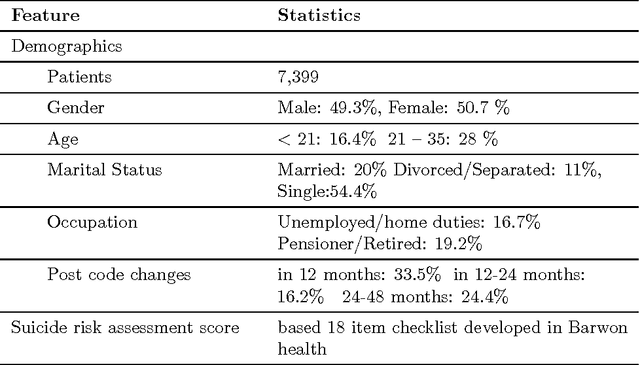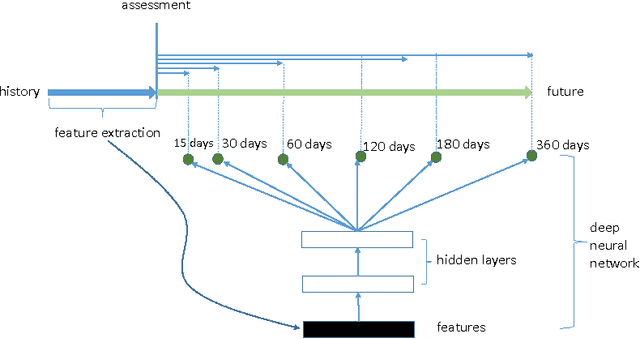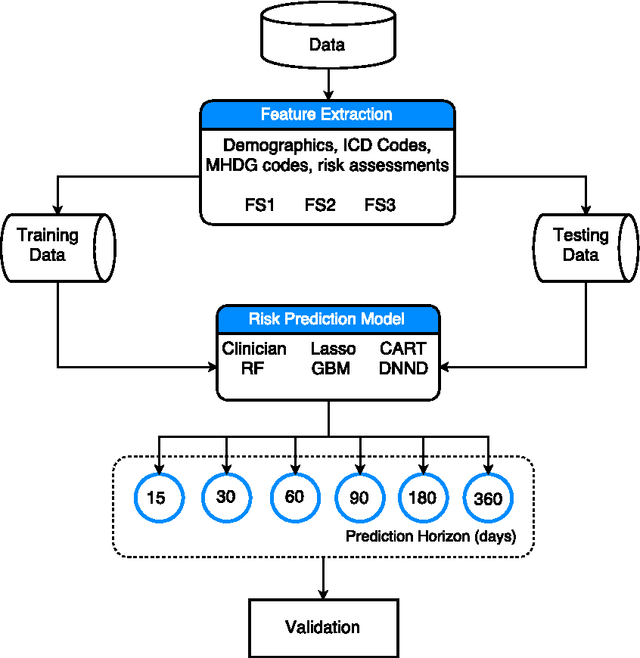Shivapratap Gopakumar
Stabilizing Linear Prediction Models using Autoencoder
Sep 28, 2016



Abstract:To date, the instability of prognostic predictors in a sparse high dimensional model, which hinders their clinical adoption, has received little attention. Stable prediction is often overlooked in favour of performance. Yet, stability prevails as key when adopting models in critical areas as healthcare. Our study proposes a stabilization scheme by detecting higher order feature correlations. Using a linear model as basis for prediction, we achieve feature stability by regularising latent correlation in features. Latent higher order correlation among features is modelled using an autoencoder network. Stability is enhanced by combining a recent technique that uses a feature graph, and augmenting external unlabelled data for training the autoencoder network. Our experiments are conducted on a heart failure cohort from an Australian hospital. Stability was measured using Consistency index for feature subsets and signal-to-noise ratio for model parameters. Our methods demonstrated significant improvement in feature stability and model estimation stability when compared to baselines.
An evaluation of randomized machine learning methods for redundant data: Predicting short and medium-term suicide risk from administrative records and risk assessments
May 03, 2016



Abstract:Accurate prediction of suicide risk in mental health patients remains an open problem. Existing methods including clinician judgments have acceptable sensitivity, but yield many false positives. Exploiting administrative data has a great potential, but the data has high dimensionality and redundancies in the recording processes. We investigate the efficacy of three most effective randomized machine learning techniques random forests, gradient boosting machines, and deep neural nets with dropout in predicting suicide risk. Using a cohort of mental health patients from a regional Australian hospital, we compare the predictive performance with popular traditional approaches clinician judgments based on a checklist, sparse logistic regression and decision trees. The randomized methods demonstrated robustness against data redundancies and superior predictive performance on AUC and F-measure.
Stabilizing Sparse Cox Model using Clinical Structures in Electronic Medical Records
Jul 23, 2014



Abstract:Stability in clinical prediction models is crucial for transferability between studies, yet has received little attention. The problem is paramount in high dimensional data which invites sparse models with feature selection capability. We introduce an effective method to stabilize sparse Cox model of time-to-events using clinical structures inherent in Electronic Medical Records. Model estimation is stabilized using a feature graph derived from two types of EMR structures: temporal structure of disease and intervention recurrences, and hierarchical structure of medical knowledge and practices. We demonstrate the efficacy of the method in predicting time-to-readmission of heart failure patients. On two stability measures - the Jaccard index and the Consistency index - the use of clinical structures significantly increased feature stability without hurting discriminative power. Our model reported a competitive AUC of 0.64 (95% CIs: [0.58,0.69]) for 6 months prediction.
 Add to Chrome
Add to Chrome Add to Firefox
Add to Firefox Add to Edge
Add to Edge